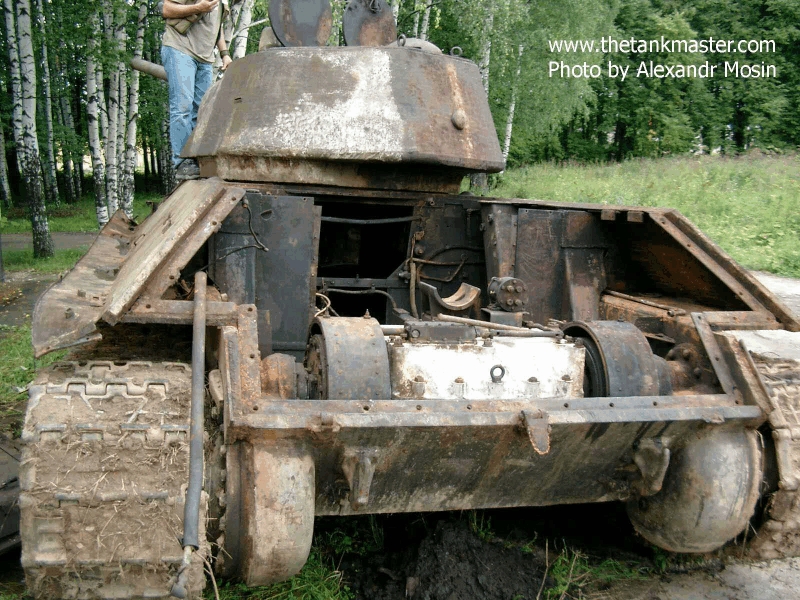ORIGINAL: Andreas1968
ORIGINAL: Yoozername
ORIGINAL: Ursa MAior
The block of the t34 engine was made of aluminium. One of the reasons the germans decided against a 1:1 copy.
Yeah that guy was rambling.
That judgement coming, in a discussion on Diesel engines, from someone not even knowing what a glow plug (Glühkerze) is has some real authority.
All the best
Andreas
Andreas, your snippy snide remarks could use some addressing.
Firstly, he mentions 'setting' plugs. Glow plugs need setting? It was obvious to me that he thinks that the T34 engine has spark plugs (which have gaps that are cleaned and set). I have forgotten more about automotive engineering than you will ever know.
From reading the following description (you would not expect a post from me without something interesting would you?) it would have to be an automatic feature. Since the decription states that the T34 uses an electric oil lubrication pump (!), I would think the initial starting current draw would be excessive. The T34's did not have an auxiliary motor to charge batteries so current draw is a large concern. More than likely , thats why there is a compressed air backup starting system. If glow plugs are 2 ohms each, and there's 12 cylinders, and each glow plug is sucking down some 6 amps each, then having them on would suck down 72 amps (assuming 12v but it could be 24v). The oil pump amperage is also considerable as is the starting motor. I would bet that you would only get so many 'electric' attempts followed by compressed air attempts.
http://guns.connect.fi/gow/T34tank1.html
The massive 38 liter, 500 horsepower V12 diesel engine and its powertrain and fuel tanks take up most of the room within the tank's body. A cold start of the engine is a most memorable undertaking in itself. Starting a large diesel with no pre-heating bears little resemblance to starting a motor car.
Grab the steering sticks. During dives into snowbanks snow pours in through the driver's hatch and can be seen on the dials in this picture, which was taken after rebuilding of the tank.
Starting the engine requires considerable skill and powers of concentration from the driver. It requires shamanistic communion with percisely those spirits inhabiting the engine which, once awakened, will emerge from the exhaust in the form of a cloud of impressive, blue smoke accompanied by a thunderous roar. That billowing cloud which almost seems to be alive, like a djinni finally set free after a thousand and one nights and a hundred and five days.
The starting up ritual begins with a press of a grounding button located at an arm's length from the driver. Provided the driver is strong enough this button will - with a genuine Russian 'clunk' sound - connect the tank's 24 volt batteries. As a reward for this considerable effort, the three dials in front of the driver will come to life. At this point it is already advisable to thank Providence or the almighty Socialistic spirit of International Fraternity, depending on one's beliefs. However this is but the first step in the demanding starting ritual of the T-34.
We will not here go into all the dogma and secrets surrounding the engine starting rites as this is a subject of considerable complexity and there exist multiple styles and schools of thought. Let us simply consider the ideal situation where the weather is warm enough that the engine requires no pre-heating with fuel heater, blow torch or diesel-soaked, burning rags. Let us also assume that there is enough juice in the batteries that the engine does not have to be set into motion with - God forbid - compressed air.
The next step is lubrication. While some people advocate lubricating the driver's innards with suitable beverages, we're here concerned only with lubricating the engine. The large diesel engine is equipped with an electrical oil pump which pushes oil into the bearings. On pressing a switch on the driver's left, the amp dial's needle plummets, accompanied by a satisfying hum from the pump. At this point the excitement is quite tangible; the moment of ignition is approaching !
Contact !
The driver slowly pushes the round tip of the gas lever forward. One more sharp intake of breath. Contemplating past successes, he presses the start button on the interior wall. Time seems to slow down, then to come to a complete halt. Then something seems to awaken. It announces its existence with a deep, soulful voice: "chunk, chunk, chunk chunk-a-chunk chunk puff CHUNK chunk-puff chunk-puff-CHUNK-CHUNK-CHUNK..."
The sound of the engine becomes more intense as the massive flywheel slowly gathers revolutions. The occasional puffs of smoke begin to have a rhythm, the sound is gradually transformed from an intensifying chunking into a steady, angry growl. The smoke escaping from the mufflers in the rear corners of the hull is thick enough that - if it were August - someone seeing it in the distance would immediately summon the fire department to put out a bush fire.
The end of the Scaup's stroll in Joensuu town center. Now it is time to climb onto the trailer..
The driver sits still, listening for any unusual sounds, smelling the air for any unusual odors, adjusting the idle using the manual gas lever beside his seat. He has his feelers out for any abnormal vibrations and keeps an eye on the oil pressure and battery charging gauges. If all is going well, this is the time to send a silent prayer of thanks to the merciful spirits of nature protecting the Scaup.
The big engine warms slowly, after all there are over sixty liters (almost 16 US gallons) of motor oil in it. We have to wait and stare at the engine's water and oil temperature gauges: is the warming up progressing normally ? If it is then our tracked friend will be ready for a spin when the engine is warm enough.




